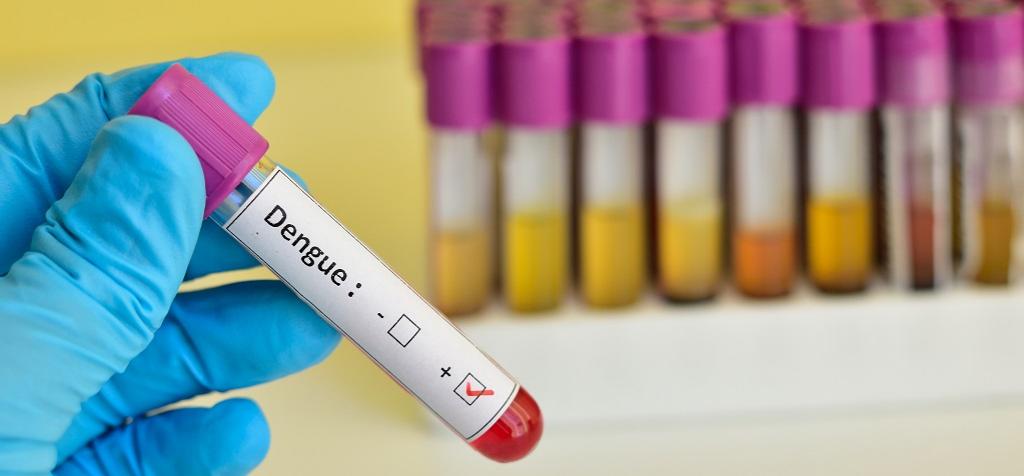

Of the five states worst-hit by the mosquito-borne disease, four are in South India: Karnataka, Tamil Nadu, Telangana and Kerala



South India is yet again hit by dengue as the killer virus has been spreading its tentacles in the country. The mosquito-borne tropical disease has so far claimed six lives and affected 6,210 this year, according to information given by the government in Lok Sabha on June 21, 2019.
Of the five worst-hit states, four are in South India: Karnataka (1303 cases, 0 deaths), Tamil Nadu (988 cases, 0 deaths), Telangana (767 cases, 0 deaths) and Kerala (469 cases, 4 deaths), said Ashwini Choubey, minister of state for health and family welfare, in reply to a Parliament question raised by BK Hariprasad, Member of Parliament from Karnataka.
In 2018, similarly, three of the five worst-hit states were in south India.
Besides, this year Maharashtra has also witnessed a high incidence of dengue cases with 767 cases and two deaths till June 9.
However, according to state entomologist Mahendra Jagtap , the cases have declined by 2 percentage points this year in June, the media reported. Jagtap also claimed better surveillance (detection) of cases for making the number seem big.
States worst-hit by dengue
.jpg)
Other states affected with dengue in 2019 are: Gujarat (363) and Rajasthan (375). The desert state was also the worst affected by H1N1 virus this year and reported more than 200 deaths and over 5,000 cases.
Even Puducherry has so far registered 266 cases, Choubey said.
Asked whether any special surveillance drive has been launched, Choubey did not give a clear reply but said surveillance is being held across India and many advisories have also been issued.
Meanwhile, the Centre claimed that it has made adequate arrangement to tackle the dengue outbreak by issuing necessary technical guidelines, advisories and kits to the state governments.
However, major challenge lies with India’s dengue surveillance system, experts have argued in a paper ‘The Organization, Implementation, and Functioning of Dengue Surveillance in India — A Systematic Scoping Review’ published in 2019.
“Although NVBDCP data confirm that dengue is established and endemic across India, an exclusive dengue surveillance system does not exist,” according to the paper.
“Instead, dengue surveillance is embedded within the NVBDCP’s sentinel surveillance network, consisting of 500 sentinel hospitals and 15 referral laboratories across India,” it said, adding that NVBDCP captures less than 0.5 per cent of the annually occurring dengue cases across India.
It pressed the need for robust coherence between all agencies of surveillance — Integrated Disease Surveillance Programme and NVBDCP — and also to integrate the private sector to report dengue cases to the concerned government authorities.
Increase in the incidence of dengue is associated with higher average annual rainfall, according to a paper titled ‘Dengue burden in India: recent trends and importance of climatic parameters’ published in August 2017.
The paper compared dengue cases and rainfall in Haryana, Punjab, Rajasthan, Gujarat and Kerala, from 1984-2014.
Kerala, which witnessed the highest annual average rainfall of 2,375 millimetre during the period had the highest dengue incidence — 49.278 per million population, it found.
Variation in precipitation and temperature also directly affects the incubation period of the dengue virus, the paper stated.
“Decreasing the incubation period by five days can lead to a three-fold higher transmission rate of dengue and raising the temperature from 17 to 30 degrees Celsius increases dengue transmission four-fold,” it added.
We are a voice to you; you have been a support to us. Together we build journalism that is independent, credible and fearless. You can further help us by making a donation. This will mean a lot for our ability to bring you news, perspectives and analysis from the ground so that we can make change together.

Comments are moderated and will be published only after the site moderator’s approval. Please use a genuine email ID and provide your name. Selected comments may also be used in the ‘Letters’ section of the Down To Earth print edition.